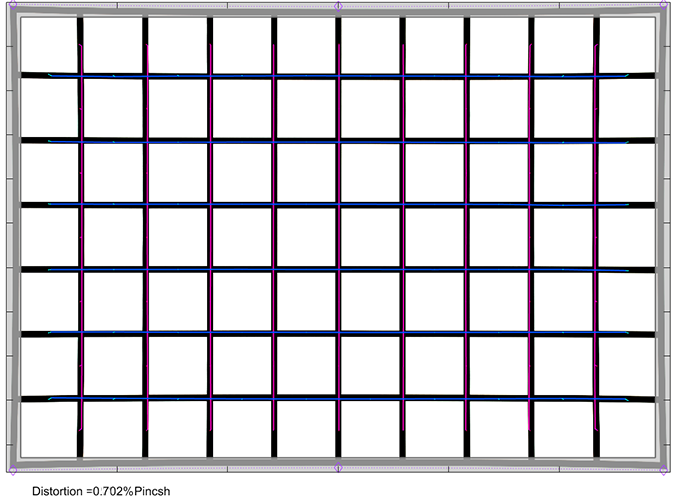|
Tokina atx-m 33mm f/1.4 E - Review / Test Report - Analysis |
|
Lens Reviews -
Sony Alpha/NEX (APS-C)
|
|
Page 2 of 3

Distortion
As mentioned, the 33mm f/1.4 E doesn't include a build-in correction profile thus you have to live with the raw optical performance. At 0.7%, a pincushion-type distortions isn't dramatic but it can be noticeable in critical scenes.

Vignetting
The vignetting characteristic of the Tokina lens is roughly in line with other high-speed lenses. At f/1.4, there's a pronounced light falloff of ~1.7EV (f-stops). As usual, stopping down to f/2 helps a lot but if you want to get rid of it, you may prefer f/2.8 and beyond. Or fix it manually in post-processing.

MTF (resolution)
The Tokina atx-m 33mm f/1.4 E shares the high-level characteristic with its cousins (23mm f/1.4, 56mm f/1.4) here. The center quality is perfectly fine at large-aperture settings but the outer image field is much softer. The contrast level is also somewhat reduced. The quality receives a boost at f/2.8, including a lift in contrast. The broader center quality is excellent and the borders/corners make it to good levels here. Stopping down further doesn't increase the center performance but the outer image field continues to improve till reaching a very good peak quality around the f/5.6 mark. Diffraction is having an impact at f/8 but it only affects the center, whereas the border/corner quality is maintained. f/11 (not shown) sees a global decrease in resolution due to diffraction but that's just physics.
The field curvature is marginal. The centering quality of the tested sample was good.
Please note that the MTF results are not directly comparable across the different systems!
Below is a simplified summary of the formal findings. The chart shows line widths
per picture height (LW/PH) can be taken to measure sharpness.
If you want to know more about the MTF50 figures you may check out the corresponding
Imatest Explanations

Chromatic Aberrations (CAs)
Lateral CA (color shadows at the image borders) are well controlled with an average pixel width peaking at 1.2px mark at the image borders at f/1.4. The CAs decrease slightly when stopping down.

Bokeh
Sharpness etc. is one thing but if you invest in such a fast lens, you are usually more interested in shallow depth-of-field photography and the rendering of the bokeh - the out-of-focus blur. And the Tokina lens is quite good at this.
Out-of-focus highlights are beautifully rendered ("feathered bokeh") in the image center with no outlining and a very smooth inner zone. If you look closely, a more edgy aperture shape is already visible at f/2 - and it's getting more obvious from f/2.8 onward.
 The images below illustrate the deterioration of the out-of-focus highlights towards the image corners. The circular shape is retained across a broad image field but you can spot the more ellipsoid shape in the corners. The corner highlight shape improves quite a bit when taking shots at f/2.8 as you may notice below. This is still better than average for such a fast lens in the grand scheme of things.
The general rendition in the focus transition zones is smooth as you can see below. The background blur is shown to the left; the foreground aspect is on the right.
The images below illustrate the deterioration of the out-of-focus highlights towards the image corners. The circular shape is retained across a broad image field but you can spot the more ellipsoid shape in the corners. The corner highlight shape improves quite a bit when taking shots at f/2.8 as you may notice below. This is still better than average for such a fast lens in the grand scheme of things.
The general rendition in the focus transition zones is smooth as you can see below. The background blur is shown to the left; the foreground aspect is on the right.

Bokeh Fringing (LoCA)
Bokeh fringing - also referred to as LoCAs - is a color fringing effect on the Z-axis. It shows up as purplish halos in front of the in-focus zone and greenish beyond. The effect is visible at f/1.4 and f/2 and starts fading at f/2.8 - this is a typical behavior for a non-APO lens although the Tokina suffers more than most in this respect.
|